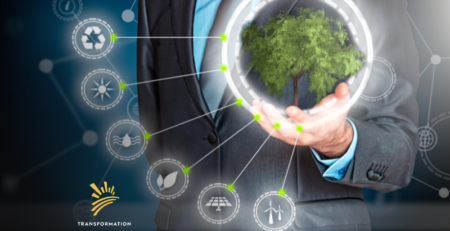New IPCC Report: Investing Takeaways
On August 9th, the IPCC (Intergovernmental Panel on Climate Change) released their newest report, detailing the current state and future projects of the climate crisis. The IPCC does not conduct research- instead, the panel evaluates thousands of studies around the world. The purpose is to comprehensively inform businesses, policymakers, governments, and individuals about addressing climate change.
The newest report- the Sixth Assessment Report— encapsulates over eight years of research from more than 14,000 scientific papers. The report states an urgent need for greenhouse gas emission reductions as information unfolds about how the planet’s ice, oceans, and air are pushing steadily into new boundaries. Below are some key takeaways from the report.
The Current State of the Climate
The report demonstrates a clear connection between human activities and climate change. Since 1970, the global surface temperature has increased faster than any other fifty-year span over the last 2000 years. Human-induced climate change is already affecting many weather and climate extremes in every region across the globe. Furthermore, evidence demonstrates that increases in extremes such as heatwaves, heavy precipitation, droughts, and tropical cyclones have strengthened since the IPCC’s last assessment report in 2014.
Possible Climate Futures
The IPCC states that every additional increment of global warming will directly result in increasing extreme events. Furthermore, scenarios of increased CO2 emissions will result in less effective land and ocean carbon sinks, expediting the aggregation of CO2 in the atmosphere. The amount of extreme weather events and climate change catastrophes depends crucially on how quickly the world shrinks greenhouse gas emissions.
At this point, we cannot stop climate change, as the global surface temperature will continue to increase under all emissions scenarios considered by the IPCC. The scenarios considered by IPCC are called Shared Socioeconomic Pathways (SSPs). The best-case climate scenario, called SSP1, involves a global shift toward sustainable management of global resources and reduced inequity. SSP2 is a business-as-usual scenario with uneven progress toward sustainable development goals. Next, SSP3 envisions worsening environmental degradation and inequality. The last two projections, SSP4 and SSP5, suppose wider inequalities and heavier fossil fuel extraction.
While we are not likely to reach the IPCC’s worst-case climate change scenarios by 2100, achieving the best-case scenario implies that cumulative global CO2 emissions will fall approximately 25% by 2030 and roughly 50% by 2035. This goal is not impossible, as 137 nations have already committed to carbon neutrality by 2050. However, countries will need to act quickly and cut roughly 50% of greenhouse gas emissions by 2030.
Limiting Future Climate Change
The world emits about 50 billion tonnes of greenhouse gases each year. The human-created climate crisis has caused dramatic changes to the global sea level, ice sheets, and oceans that will be irreversible for centuries to millennia. However, the latest IPCC report does contain some hope. Here are the takeaways:
- Limit cumulative CO2 emissions to at least net-zero
- Reduce other greenhouse gas emissions
- Cut methane (CH4) emissions to reduce aerosol pollution and improve air quality
Energy, including electricity, heat, and transport, makes up 73.2% of global greenhouse gas emissions. Agriculture, forestry, and land use makes up 18.4%, and the remaining emissions come from waste and industry sectors. Limiting and reducing emissions will require cooperation across governments and industries. CDR technologies also carry potential. Anthropogenic CO2 removal (CDR) can remove CO2 from the atmosphere and durably store it in reservoirs. However, we should not only rely on CDR methods, as they can have wide-ranging impacts on climate and biogeochemical cycles. Therefore, these impacts can either strengthen or weaken the ability of CDR methods to reduce warming and remove CO2.
Investing to End the Climate Crisis
To avoid a harrowing future, every person has a role to play in climate change mitigation. Investors have a crucial opportunity to direct money toward projects and companies that maintain a low carbon footprint and support a net-zero economy. Here are some things to look out for:
- Ensure that there are a diversity of perspectives represented
- Support rigorous transparency within ventures to avoid greenwashing schemes
- Confirm that leaders and board members are climate-competent.
While sustainability and climate conversations are gaining traction in business, investors need to do their due diligence to ensure that groups take action towards net-zero emissions. With these strategies, investors can be a part of long-term sustainability for future generations.
Conclusions
Rising global temperatures are heightening the odds of intense, prolonged heat waves and a precarious water cycle. As the intensity of these events increases, the butterfly effect will be unprecedented. For example, excessive rainfall increases the risk for livestock and agricultural losses, while droughts are wildfire hazards.
However, we have the technology and know-how to change our trajectory. We put a man on the moon, but now we need to keep humankind thriving on earth. And to achieve the best climate change scenario, we need to concentrate intelligence, leadership, and sustainable investments in a net-zero society and economy. With unity, we can ensure life on earth for future generations.



Leave a Reply